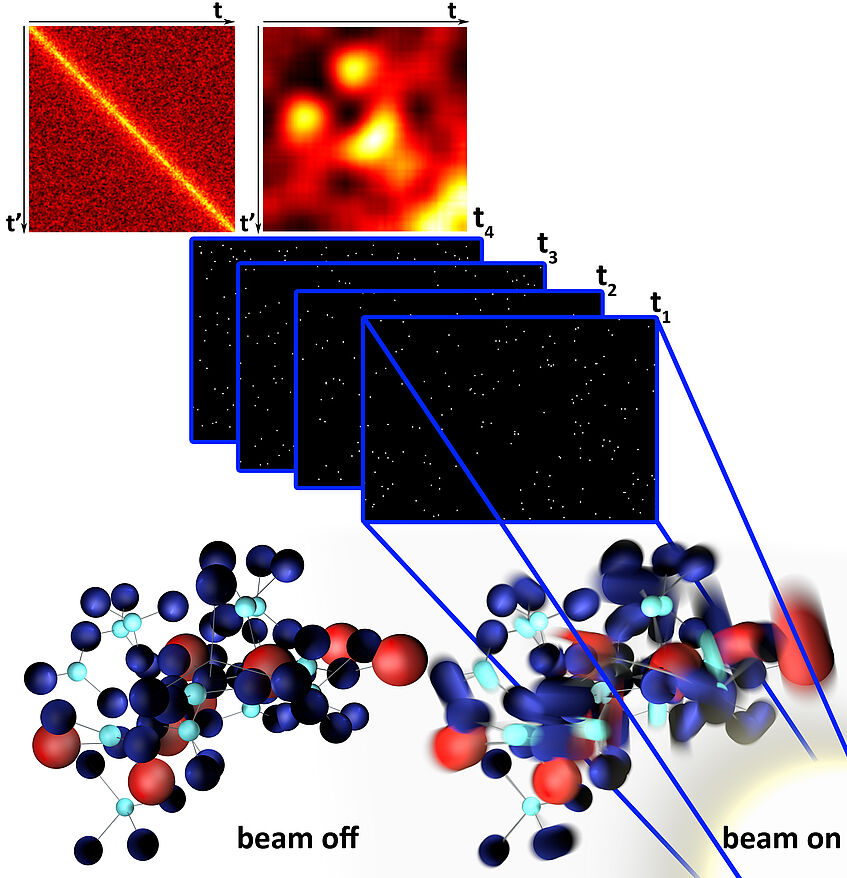Measurement procedure of beam-induced dynamics in solids

© Bogdan Sepiol, Christoph Tietz, Michael Leitner, Michael Legenstein, Tobias M. Fritz
Title of the project: Beam-induced atomic motion in oxide glasses
Name of the VDSP student: Katharina Holzweber
Project supervised by: Bogdan Sepiol
I am a phd student of the group of ao. Prof. Bogdan Sepiol. My research interest lies in the investigation of atomic dynamics in solids that I study with the technique of X-ray Photon Correlation Spectroscopy (XPCS). For that reason a frequent visit to synchrotrons offering a very coherent x-ray beamline to access the resolution of atomic motion in reciprocal space is a prerequisite for my work.
It is very well known for soft materials that x-rays are not only probing the sample but at the same time also disrupting it, which makes synchrotron measurements with a high brilliance very challenging. In the case of solids, however, the influence of the x-ray beam has been more or less neglected so far.
In this image you see parts of the structure of an alkali borate glass sample (Molecular Dynamics simulation).
At room temperature we expected no atomic dynamics at all. However, when exposed to the beam, the atoms start moving, which is shown by blurred atomic motion.
The detector pictures displaying the time t_1, t_2, t_3 and t_4 are extracts from our experiments and show the first 4 out of 1000 pictures that all together generate our reciprocal movie of atomic motion. The light spots correspond to the diffracted photons hitting the detector’s surface.
On top of the image you find one of our evaluations, the so-called two-time Auto Correlation Function (tt-ACF). It immediately shows us if the dynamics is stationary in time (light orange line crossing the tt-ACF picture with the same width) or if any altering, non-equilibrium processes or unstable measurement conditions take place. The latter could lead to very odd and funny looking tt-ACF pictures that could cheer up the nightshift of a beamtime.
